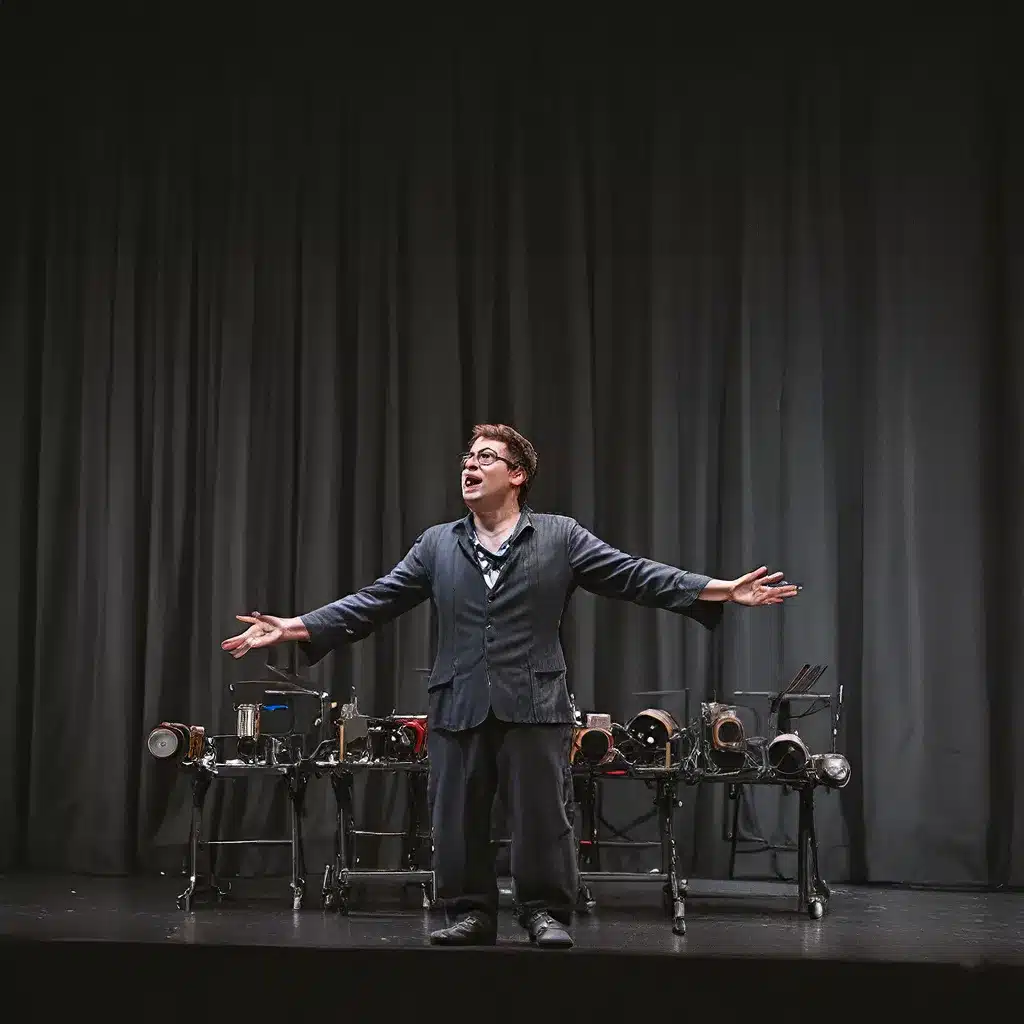
The Illusion of the Impossible
Imagine, if you will, a scene from the grand opera The Pearl Fishers. Three performers, clad in flowing costumes, gracefully dive deep into the ocean’s depths in search of the elusive, shimmering pearls. The lush, 50-foot-tall proscenium frames this breathtaking underwater tableau, giving the audience a glimpse into an enchanting, aquatic world. But take a closer look – there’s no water in sight! It’s all an illusion, created through the ingenious use of screens, lighting, cables, and expert choreography.
The mastermind behind this technical wizardry is none other than Cameron Whitehorne, a Rhode Island College alumnus and the Head of Production Engineering at the Metropolitan Opera. Whitehorne’s job involves collaborating with set designers and directors to create automated, state-of-the-art systems that bring their grand visions to life on the stage.
“My job is to create whatever the director and set designer dream up,” Whitehorne explains. “And they have quite a huge dream space to work with.” You see, the sets for grand operas are often massive, easily dwarfing those of a typical Broadway show. The Met’s stage is four or five times the size of a Broadway house, providing ample room for Whitehorne and his team to unleash their technical prowess.
Bringing the Dream to Life
In the case of The Pearl Fishers, Whitehorne and his team had to devise a way to make the performers appear as if they were effortlessly swimming through the ocean. To achieve this, they attached cables to the performers’ hips, which were then connected to a specialized machine that could lift and move their bodies in a programmed, choreographed routine. Whitehorne also collaborated with the lighting and video departments to create the illusion of water, and the costume department to select fabrics that would billow and flow, further enhancing the underwater aesthetic.
“The opening scene of The Pearl Fishers is one of the best special effects I’ve ever done,” Whitehorne proudly declares, “and one of the most technically intensive productions I’ve ever worked on.”
But the technical wizardry doesn’t stop there. Whitehorne and his team are responsible for designing and implementing a wide range of automated systems that make the impossible seem possible on the grand opera stage. From rotating stages and flying scenery to intricate hydraulic and electrical mechanisms, these unsung heroes of the performing arts are the true magicians behind the curtain.
The Endless Possibilities of Automation
Automation has become a crucial component of modern musical theater, transforming the way productions are designed, constructed, and executed. Gone are the days of relying solely on manual labor and traditional stage machinery. Today, the industry is embracing the power of technology to push the boundaries of what’s achievable on stage.
Take, for example, the recent reopening of Broadway after the COVID-19 pandemic. As theaters welcomed back audiences, they unveiled a host of new technological advancements that enhanced the overall experience. Automated lighting systems, programmable stage elements, and advanced audio equipment all contributed to creating more immersive, captivating performances.
“If you had asked me 10 years ago what I love most about my work, I would have said building the cool thing, designing the cool mechanical effect or electronic device,” Whitehorne reflects. “What excites me now is building a team that works well together.”
Indeed, the true power of automation lies in its ability to bring together a diverse array of technical experts, each with their own unique skills and perspectives. From electrical engineers and computer programmers to scenic artists and lighting designers, these collaborative efforts ensure that the director’s vision is faithfully translated into a breathtaking reality.
The Unsung Heroes of the Stage
As Whitehorne mentions, the technical team at the Met is responsible for maintaining an astounding 26 productions per year, which equates to approximately 130 shows on their “whiteboard” at any given time. This level of coordination and attention to detail is nothing short of remarkable.
Behind the glamour of the performers and the grandeur of the sets, there exists a dedicated army of technical wizards who work tirelessly to bring these productions to life. From troubleshooting technical issues before a show to designing the next five years’ worth of sets, their contributions are truly invaluable.
“My advice for RIC technical theater majors,” Whitehorne shares, “is to take as many math and science courses as you can. Also, gain real-world experience. That’s where I got the bug for automation engineering.”
Whitehorne’s own journey is a testament to the importance of a well-rounded education and hands-on experience. After graduating from RIC, he went on to earn an MFA degree in stage automation and was later recruited by one of the largest scenic companies on Broadway, before eventually landing his dream job at the Metropolitan Opera.
The Future of Musical Theater
As the world of musical theater continues to evolve, the role of automation and technical wizardry will only become more crucial. Audiences have come to expect increasingly sophisticated and visually stunning productions, and the pressure is on for theaters to keep up with the latest technological advancements.
“When you’re in New York and if opera’s your thing, try and check out a production,” Whitehorne encourages. “There’s magic behind these doors.”
Indeed, the technical marvels that grace the stages of the world’s most prestigious theaters are a testament to the ingenuity and dedication of the unsung heroes behind the curtain. From the enchanting underwater illusion of The Pearl Fishers to the dazzling spectacles of Broadway, these technical wizards are the true masters of their craft, seamlessly blending creativity, engineering, and sheer technical prowess to bring the impossible to life.
So, the next time you find yourself captivated by the awe-inspiring feats of a musical theater production, take a moment to appreciate the tireless efforts of the talented individuals who made it all possible. For they are the true magicians behind the curtain, weaving their technical wizardry to transport us to worlds of pure enchantment.

